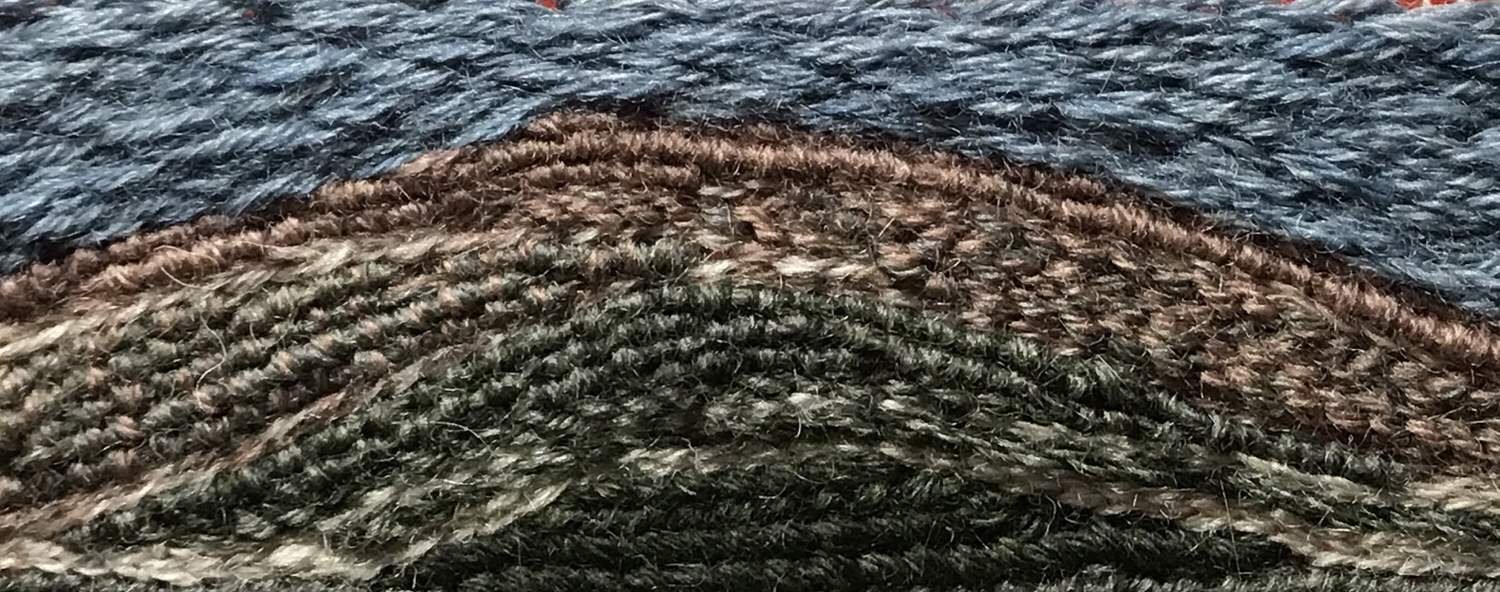What is Soumak?
Detail of “Roots” where Soumak is used in all the colored lines plus some of the finer silvery lines.
Soumak is a specific technique that can be used in weaving to create a raised surface and thus, lots of texture.
When I first began weaving the interconnections of trees through roots and underground channels, I needed an effective way to create multiple lines going in multiple directions. I went on a deep dive into the research of Soumak techniques in search of a way of depicting tree roots and finer lines in tapestry. This is what spurred my rabbit hole research into Soumak which eventually led to a comprehensive online class I call “The Many Faces of Soumak.”
I rarely teach this in person, but this summer I will be teaching a 3-day workshop on Soumak techniques with the Midwest Weavers Association’s “Confluence of Threads” in Des Moines, Iowa. The dates are June 12-14. Registration ends May 1st, so if you’re interested - sign up now!
If you look closely, you can see a double layer of the Soumak stitch along the edge.
Most weavers are familiar with Soumak as a way to create a nice edge along the fell line that works as a turning point for a hem. This is normally done with one row of Single Soumak. I usually do two rows with a few picks of Plain Weave in between. If you’re a knitter, think of a turned hem. It makes a nice crisp turn.
It’s also used as an outlining tool (which - in addition - serves to neutralize the shed at the same time).
Or maybe you’re familiar with it as an all-over stitch, as in the fabulous work of David Johnson or Carol Ward.
But there are so many more variations and uses for Soumak!
For example, in “Tree Spirits”, multiple variations of Soumak are used.
The celadon lines in the foreground are done with what I call Vertical Soumak. This is the same technique as in “Roots” - above. Other names might be Diagonal, or Line Soumak.
The large roots of the tree are created by working a consistent Double Soumak (eccentrically woven).
The tree trunk incorporates five more variations of Double and Single Soumak.
So you see, the technique can be done in many different ways.
Above is one of my earlier tapestries. That’s Soumak, folks. It’s not embroidery. Not surface embellishment, but woven into the surface at the same time as the background.
And here’s one of my favorites. All in Double Soumak techniques. Lots of texture using variations.
I’m excited to be teaching these techniques and more this summer. Remember, registration closes May 1st, so if you’re interested, sign up now! They do not take walk-ins or registration after that point.
I’ll also be teaching classes on Line, Color, and more Texture. My three favorites!




